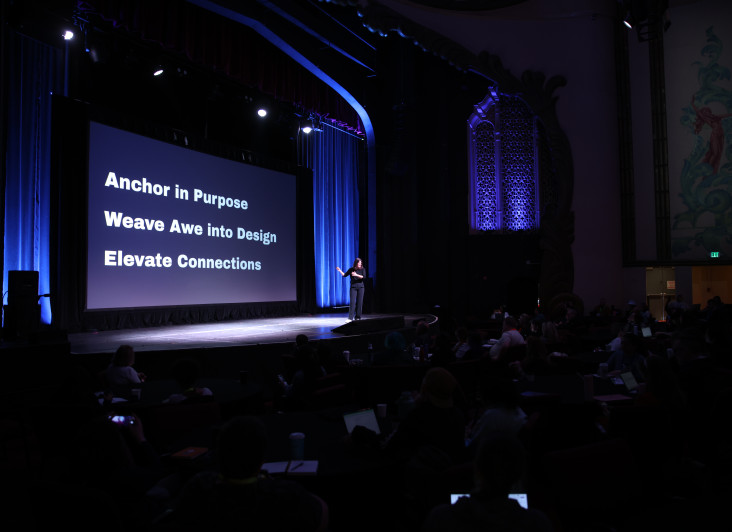The ultimate guide to CRM systems for online communities: Part 2

Who is using and updating the CRM system?
If you have a CRM system but only one or two people are regularly updating the information, you’re not alone. This is a common challenge for many community leaders, and is one of the main reasons why only 24% of CRM leaders have full visibility of their customer’s journey.
Your CRM software is only as good as the information it holds, so make sure the right people are updating it as often as possible!
Remember, CRM stands for Customer Relationship Management, meaning your CRM system’s primary purpose is to manage your customer relationships. If your CRM system is not holding information that can help improve or build your customer relationships, then it’s not being used correctly.
Benefits of an updated CRM system
When your CRM is regularly updated by different departments, it will hold accurate information and serve as a single source of truth for your team.
In fact, 32% of organisations have said their most common customer experience strategy is to use their CRM as a single source of truth.
Your CRM system should become a ‘unified brain’ about your customers, providing you with the latest details regardless of:
Who your community members spoke to, or
Which department collated the information
From a user perspective, a well-maintained CRM system means they never need to worry about repeating themselves. Each time they provide new information about themselves, the CRM system is updated and their data is synced for all.
Imagine you have an online community for aspiring writers.
If a member informs customer support that they’re struggling to access certain content that will help them write their mystery book, this nugget of information should be added to the CRM system.
By knowing this member is writing a mystery book, you could tailor their content library (for example, offer mystery-specific writing prompts) or personalise their recommendations (such as inviting them to mystery writing workshops or connecting them with other mystery writers).
Taking the initiative to input even the smallest details into your CRM system can be the difference between a positive and negative experience for your community members.

Does my CRM system replace customer support?
No, your CRM system is there to support, not replace.
If your customer support team can use the CRM system as a consolidated customer database, it will enable them to improve their interactions and personalise the customer assistance.
By having access to a member’s history, customer support agents can quickly identify and address concerns, which can reduce response times and improve customer satisfaction.
Automations vs manual - which is better?
Automations are your best choice when you want to ensure tasks are carried out exactly as intended. In fact, it’s one of the main reasons why companies use CRM systems in the first place.
There are variables that can break a system when it’s done manually, from an employee taking annual leave to simply forgetting to do it. There’s also the aspect of time. More than an hour is spent manually entering data each day by 32% of professionals - a percentage of time that many businesses cannot afford.
Automation can:
Reduce repetitive tasks
Routine tasks like data entry, welcome emails, and membership renewals can be handled with the likes of automation. This frees up valuable time and resources for community managers to focus on deeper engagement strategies and personalised outreach.
Improves consistency
Human error is inevitable, but automation removes that risk. Automation can create a consistent and standardised way of communicating which can improve the experience for customers and members.
However, that’s not to say manual work doesn’t have its place.
In fact, manual processes are crucial in online communities for:
Conflict resolution
Adapting to unique scenarios
Recognising member milestones
Personal feedback collection
Finding the balance between automation and manual processes will let you get the best out of your CRM system.
First, think about your time-heavy tasks and see if there’s a way to automate these. Next, look at tasks that always follow the same steps to complete and find the tools that will allow you to automate this process.
Manual tasks, on the other hand, should be making a difference to the member experience, particularly in personalising the journey.

Top tips for CRM use
If you’re considering a CRM system for your online business or thinking about moving to a new platform, our top tips are:
Make sure your CRM has good integration
Did you know that 74% of CRM leaders say tool switching negatively impacts their teams’ efficiency and slows down ticket resolutions? However, your CRM system doesn't have to have all the bells and whistles.
All-in-one platforms can be appealing at first but they don't always work how you think. Don’t compromise on what works on your CRM system to try and squeeze everything into one place. If your CRM has good integration options, then you can get the best of both worlds!
60% of organisations say their top priority is to use their CRM as a centralised communication hub for nurturing customers, while 45% say getting a complete view of customer interactions is a top priority for maximising their CRM over the next five years.
Good integration opens these doors so your CRM can be the best it can be. When integration is prioritised, data can flow smoothly across your organisation to create a unified view of customer interactions.
Don't store all the information in your head
Getting all client information out of your headspace and into your CRM system is helpful for two main reasons.
One, your headspace is valuable and storing client information is not what it should be doing. Adding these details into the CRM system frees up your head to focus on what’s important.
Two, it will help your team have that unified outlook that we spoke about earlier. Your team effectively has the same resources and details that you have and are able to converse, communicate, and personalise the experience for the customer.
Customers will contact you through a variety of channels, and yet more than half of customers don’t feel like sales, service, or marketing share the same information. Capturing every conversation in your CRM allows you to create a connected experience for the customer.
Remember, your customer has a relationship with the brand, not one person.
Audit your data
Data can get messy over time. According to a recent report, 70% of CRM system data goes bad every year!
Inaccurate or outdated data not only puts the value of your CRM system in jeopardy, it can also create a bad customer experience. Customers don’t feel important, they get impatient, and they may even take their business elsewhere as a result.
By cleaning and updating your data, you can ensure that your CRM system remains a valuable resource for your company and community to deliver excellent customer experiences.
CRM systems for online communities
At Steadfast Collective, we help companies build community-focused websites and applications. If you’re looking to improve your community, reach out to our team today. We’d love to hear from you!
More Articles

Can you track it?
Every budget is being put under the microscope right now, and quite right too.

When to Build Your Own Membership Platform (and When Not To)
I’ll let you in on a secret, not every membership organisation needs a bespoke membership platform.

Design for AWE
Anchor. Wonder. Connection. The blueprint for unforgettable memberships.

